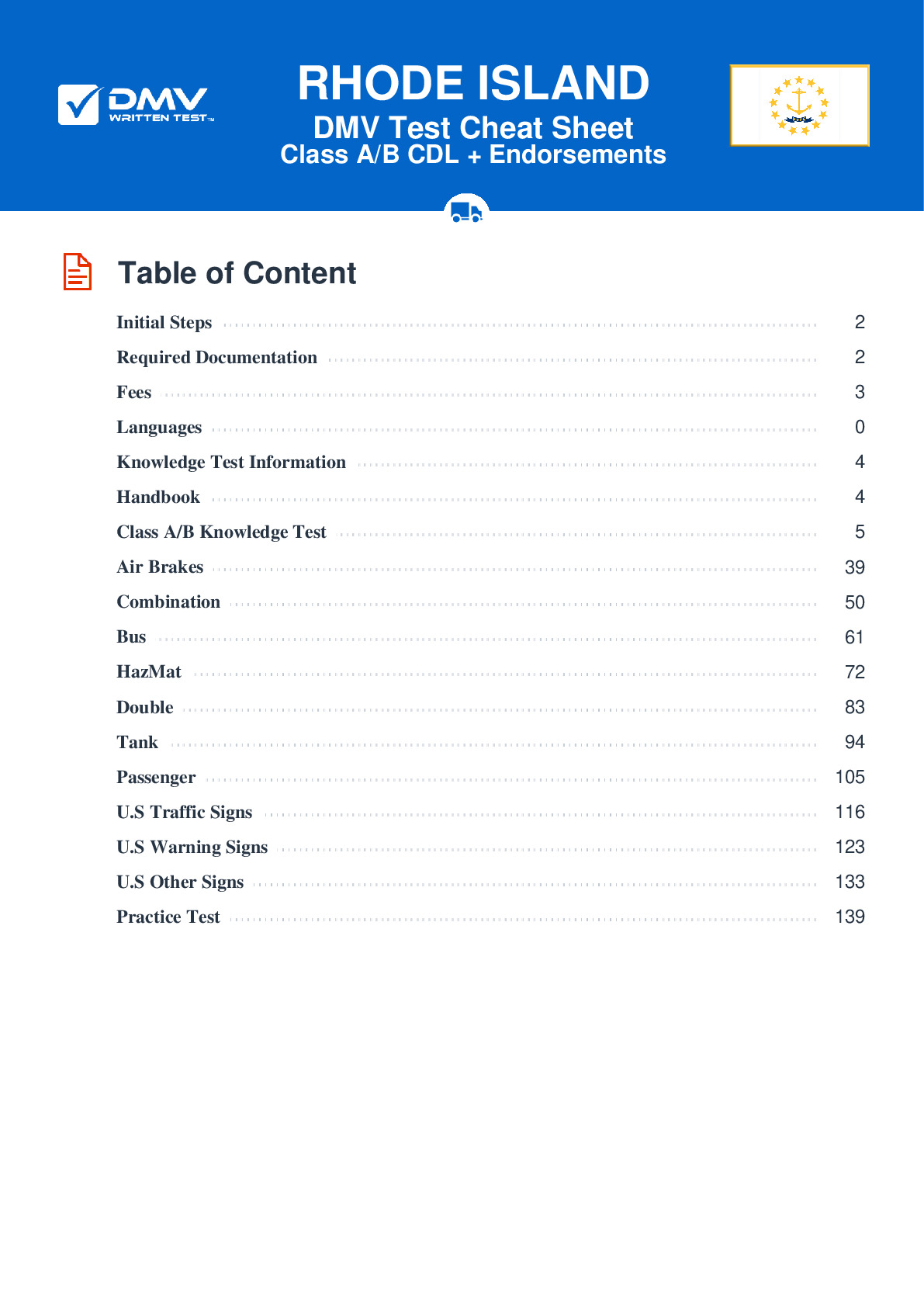Air Brakes
This endorsement is required for driving a vehicle with air brakes. To receive this endorsement, applicants must pass a written test. The test consists of 25 multiple choice questions. Each question has three answer choices. To pass, the applicant must answer at least 20 questions correctly. Test questions come from the Rhode Island Commercial Driver License Manual. Questions come from the chapter covering: Air Brakes. The Air Brakes endorsement may be used with the Class A, B or C CDL.
Number of Question
Passing Score
13. A wig wag is:
Explanation
Vehicles with air brakes are required to be equipped with a low pressure warning device. A wig wag is a type of low air pressure warning device. This device drops a mechanical arm into the driver's view if the pressure in the tanks drops to a level between 55 and 75 psi.
14. Using the brakes creates heat. If too much heat is produced:
Explanation
Brakes are designed to take a lot of heat, but drivers should not rely solely on the brakes to slow their vehicle. Brakes may fade and lose their ability to slow down the vehicle if they become too hot, so drivers should also rely on the engine braking effect.
15. During an applied leakage test, the maximum leakage rate for a double combination vehicle is ____ in a minute.
Explanation
It is important to know the maximum air loss rate that is safe for your specific vehicle. A double combination vehicle should have a leakage rate no higher than 4 psi in a minute during an applied leakage test.
16. What do the two systems of a dual air brake system share?
Explanation
Both systems in a dual air brake systems share a single air compressor. If the air compressor is damaged, neither system will be able to operate properly.
17. A low air pressure warning signal should activate:
Explanation
In an air brake system, a low air pressure warning signal must come on if air pressure in the tanks falls below 60 psi. This warning signal may come in the form of a light, a buzzer, or a wig wag.
18. When stopping in an emergency situation, you should:
Explanation




